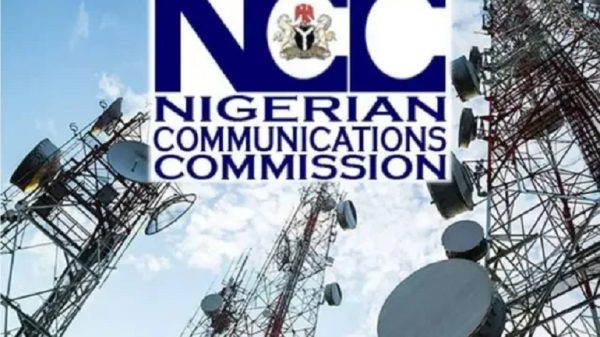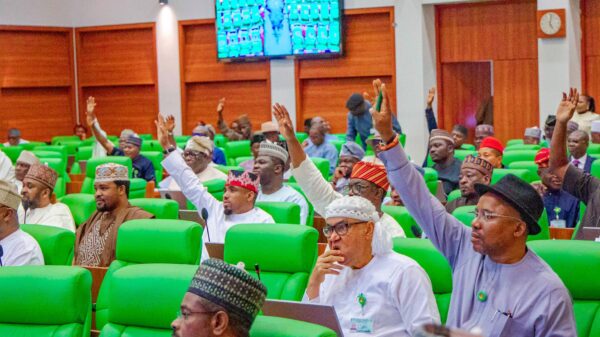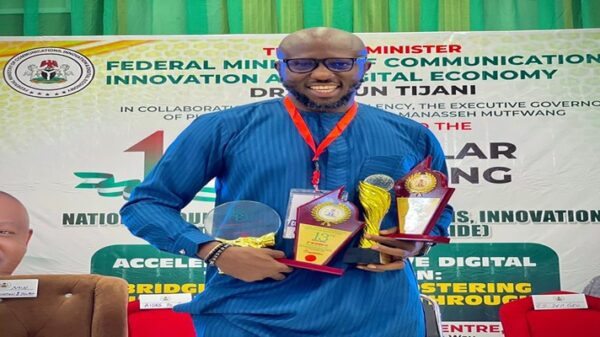Dr Ogbonnaya Onu, Minister of Science and Technology on Tuesday reiterated the need to develop Geospatial technology for operational efficiency and good governance.
Geospatial technology is a term used to describe the range of modern tools contributing to the geographic mapping and analysis of the Earth and human societies.
Onu made the call at the opening of a three-day stakeholder’s workshop on the Geo-Referenced Infrastructure and Demographic Data for Development (GRID3) Ward Boundary Validation and National Geospatial Data Infrastructure (NGDI) Bill Review in Abuja.
Onuh said geospatial technology was the bedrock of many technologies, and “the workshop would strengthen the National Geo-information Policy and the critical components of the country’s soft infrastructure embedded in geospatial technology.”
“Technological innovation is useful for national development.
“The ward boundaries and the NGDI are very useful in achieving operational efficiency and good governance in elections, population census, boundaries, social investment programme and also the COVID-19 Geospatial tracking systems.
“It is important to note that the GRID3 project would help improve effective coordination in the collection and management of data in our dear nation.
“This will ensure that Nigerians benefit from an evidence based response, result distribution and data driven policy making,’’ he said.
He assured the stakeholders of the FG’s support towards achieving the aim of the project.
Onu also called on the National Space Research and Development Agency (NASRDA) to deploy its satellite assets in helping the nation address insecurity problems.
According to him, the country needs conducive environment where citizens can travel safely, live peacefully and where jobs can be created for young people.
Mr Clem Agba, Minister of State, Budget and National Planning, said the national, states, local government areas, ward boundaries and the National Spatial Data Infrastructure (NSDI) had been recognised as vital entities to national development.
He then stressed the need for all stakeholders engagement.
According to Agba, updated harmonised boundaries will inform emergency operations, routine operations, planning and statistical Infrastructure.
He decried that there were still challenges in harmonising the boundaries, resulting to the use of paper maps which prevented use of standard boundary files across different locations.
The minister said GRID3 programme was collaborating with government agencies and relevant stakeholders to harmonise boundaries which would facilitate the implementation of the Medium Term National Development Plan 2021 to 2025 and the Nigeria Agenda 2050.
He added that the GRID3 database already had 1,247 datasets across the 36 states of the federation and the FCT and in 12 sectors which include agriculture, education, energy, security among others.
“Nigeria had already started getting the benefit of this programme, the GRID3 Nigeria operational ward boundaries have significantly contributed to the polio eradication in Nigeria.
“Geo-Information System-based (GIS) maps helped health workers develop effective micro plans at ward level to visit every settlement and reach target populations.
“The GRID3 project has produced 774 LGA GIS-based maps for the National Primary Health Care Development Agency to support the COVID-19 vaccination across the country.
“This is also in line with the project’s plan to roll out its support to routine immunisation by accurately delineating health facility catchment areas and ensure no child is missing on the map,’’ he said.
He disclosed that the FG was developing a monitoring and evaluation tool called `The Eye Mark’.
“The Eye Mark, is a mobile and web application that would incorporate the geospatial capabilities at different administrative units for Nigerians to appraise projects by Ministries, Departments and Agencies,’’ he said.
The Director-General of NASRDA, Dr Halilu Shaba, said that good governance would not be realised without properly securing the nation’s boundaries.
Shaba said, “the time has come for Nigeria to harmonise and unify all the various operational boundaries to ensure interoperability and removal of wastages in generation of similar datasets.
“This workshop is aimed at removing the duplicity through consensus building amongst stakeholders to assess the available operational boundaries, datasets and agree on the fourth layer leading to policy formulation which the implementation will have direct impacts on citizens,’’ he added.
Dr Ogbonnaya Onu, Minister of Science and Technology, Dr Halilu Shaba, D-G of NASRDA and other dignitaries at the GRID3, NGDI bill review workshop in Abuja
He noted that stakeholders would consider and agree on the Draft of the NGDI bill which was overdue for legislative procedures.
Dr Matthew Adepoju, Chairman, Project Implementation Team of GRID3 said there was a Federal Executive Council resolution on NGDI, hence the review of the bill draft.
Adepoju said that through the project, dataset was made available in different sectors of the country and also available on www.grid3.gov.ng.
“This is a critical infrastructure that Nigeria needs for policy formulation and project implementation,’’ Adepoju said.
GRID3, launched in March 2018 and supported by Melinda and Bill Gates Foundation for developing countries aims to facilitate the production, collection, use, and dissemination of high-resolution population.
It is also to support infrastructure and other reference data in support of national sectoral development priorities, humanitarian efforts, and the United Nations’ Sustainable Development Goals (SDGs).
GRID3 in Nigeria is aimed at increasing access to data for use by decision makers, donors, non-profit organisations and private sector partners in the country.
The project implementation team is domiciled in NASRDA in partnership with relevant stakeholders. (NAN)
![]()



























































